Author: Tian Hui
Aiways, which maintains maximum flexibility in technology, market routes and marketing models, has a new layout: battery swap.
On May 20th, Aiways announced the first battery swap station and U5 electric SUV equipped with swappable batteries officially entered the demonstration operation stage. Currently, it has received 600 orders for the U5 with swappable batteries.
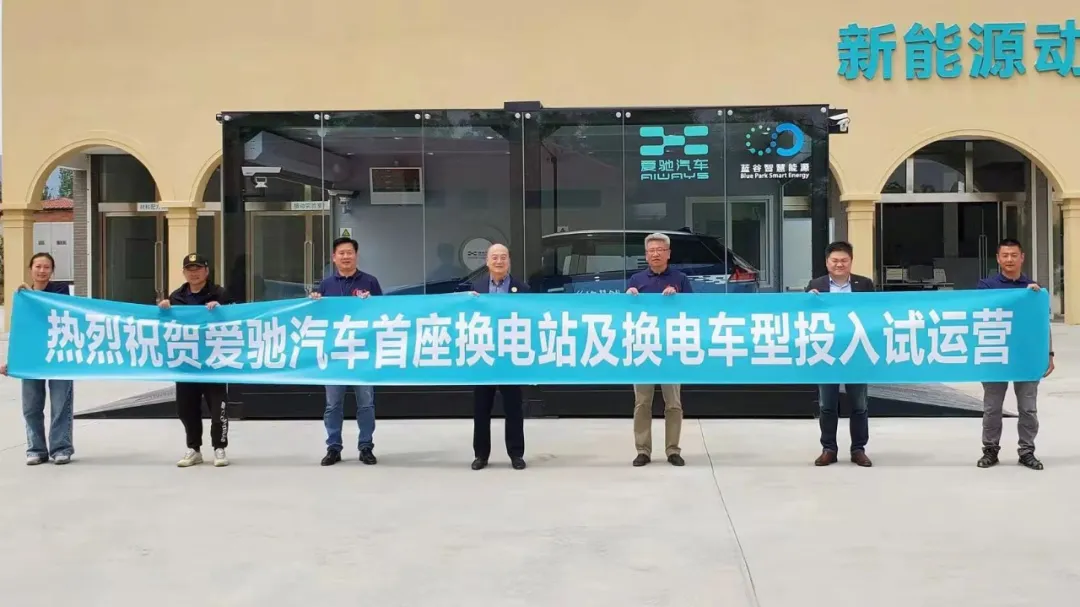
Within the next three years, Aiways will cooperate with partners to deploy no less than 20,000 vehicles together, realizing coverage of over 17 cities, and building no less than 200 battery swap stations.
Previously, Aiways had both pure electric and methanol reforming hydrogen fuel cell technologies on its new energy technology roadmap. It targets both the domestic and overseas markets while also providing direct sales to private consumers and operating services. So far, Aiways has supported both charging and battery swap in complementing pure electric vehicle technologies.
Why did Aiways layout its battery swap business?
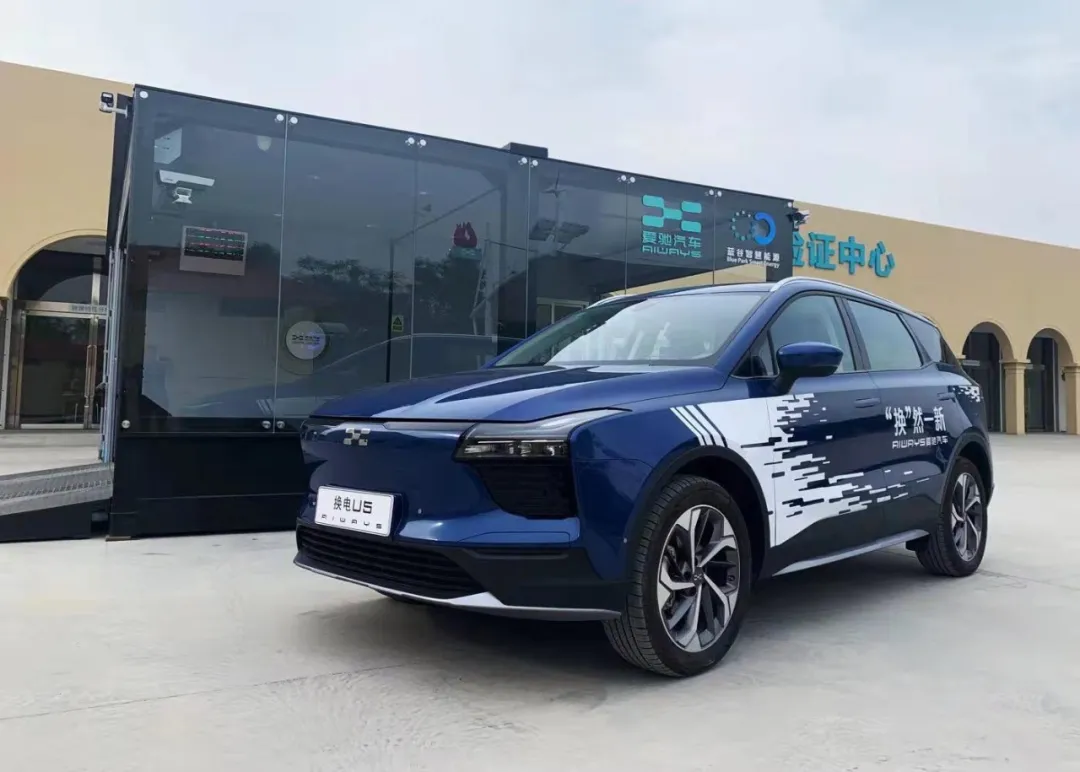
Battery swap is currently the most popular keyword in the electric vehicle industry.
In terms of policy, since 2019, battery swap mode benefits have continuously increased. In 2020 alone, the central government has spoken out in favor of battery swap up to seven times. Many local governments have also launched battery swap demonstration operations, attracting more local governments to follow suit.
On the market front, companies such as NIO, ODD, and Geely have continued to increase the scale of their battery swap models and swap stations, rapidly expanding their scale.
The controversy surrounding battery swap electric vehicles has ended, and the prospect is clear. It will enter the stage of accelerated development.
Is Aiways following the trend?
In fact, whether the battery swap model can form an independent and sustainable business model outside of government pricing is still being explored by the entire industry.
By laying out its battery swap model at this time, Aiways hopes to leverage its accumulated R&D in pure electric platforms and intelligent connected vehicles, expanding into the domestic and overseas markets while exploring both the private consumer and operating markets. After integrating the battery swap model, Aiways also aims to solve the problem of battery swap being appealing but not practical.
Partnering with Blue Valley Intelligence to tap into the on-demand ride market
The first batch of Aiways battery swap versions will be launched into the on-demand ride market.
It is a mature approach.
Although the battery swap pure EV market has started, for the typical private consumer market, battery swap is not an urgent need. Only NIO has conducted in-depth development in this field, targeting high-end consumers and creating value-added services rather than fundamental needs.
However, ride-hailing and taxi services have a strong demand for operating time and hope to reduce the time required for charging. Thus, the demand for battery swap is greater.Aiways did not start from scratch in terms of battery swapping but rather chose an experienced partner, Blue Guoxin Energy. One of the major shareholders of Blue Guoxin Energy is BAIC New Energy, which has promoted nearly 20,000 battery-swapping taxis in Beijing, Xiamen, Guangzhou, and other places. Blue Guoxin Energy has inherited abundant experience in designing battery-swapping vehicles and station operations, and is also one of the units that developed the national standard for electric vehicle battery-swapping safety requirements. Aiways’ cooperation with Blue Guoxin Energy enables it to directly apply the most mature battery-swapping technology available.
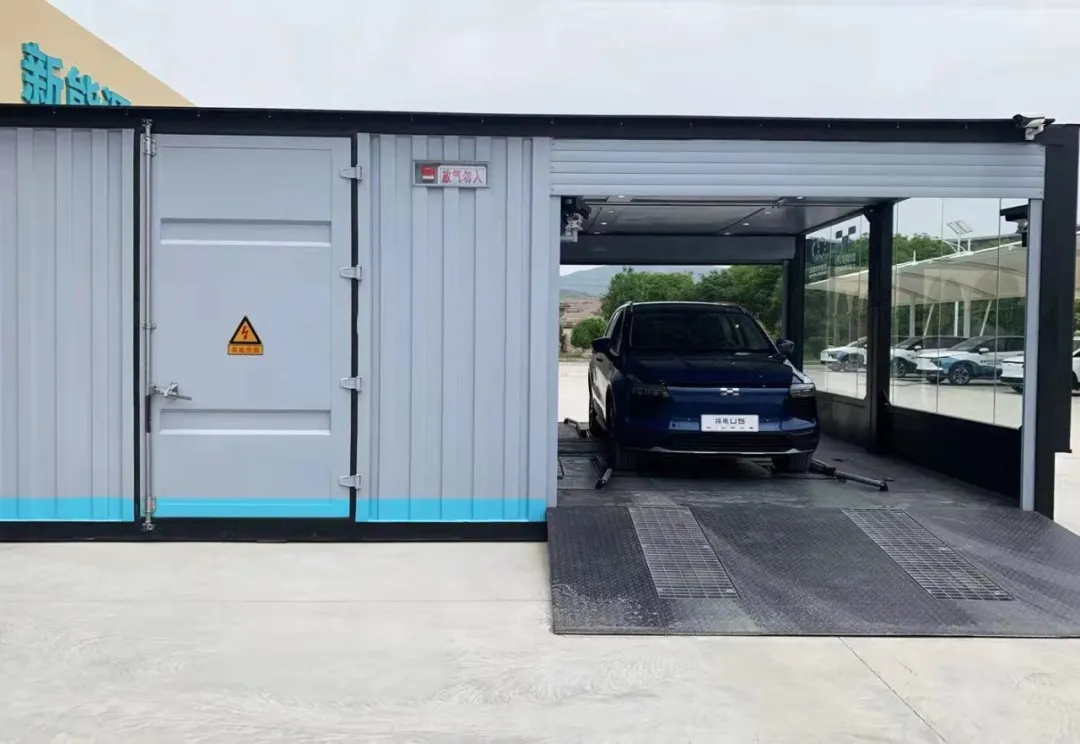
In April 2021, Aiways and Blue Guoxin Energy signed a strategic cooperation agreement, announcing that the two parties will jointly conduct research and development, joint operation, and cooperation in developing battery-swapping vehicle models, researching and developing battery-swapping technology, manufacturing and selling battery-swapping station equipment, big data operation, brand cooperation, and promotion, among other businesses.
According to the plan of the two parties, within the next three years, they will jointly put no fewer than 20,000 vehicles into operation, covering more than 17 cities, and build no fewer than 200 battery-swapping stations.
This is a rather large-scale battery-swapping layout.
Although Aiways has the assistance of its partner, Blue Guoxin Energy, to deploy such a large battery-swapping network, it would be difficult to meet the network’s needs without suitable technology and products, let alone talk about the deployment of the entire battery-swapping network.
In the future, the operating vehicles in the battery-swapping network will be the Aiways U5 battery-swapping model.
For battery-swapping vehicles put into commercial operation, charging by mileage rather than the capacity of the power battery is a more suitable business model.
The business model of charging by mileage has already been verified by Blue Guoxin Energy in the commercial vehicle fields of taxis and online ride-hailing.
Aiways further promotes this model to the passenger vehicle market, which is a challenge but a pragmatic and reliable business logic.
Aiways is also one of the few new automakers to obtain the national online ride-hailing service qualification among new forces in the car industry.
How Will Aiways Handle the Battery-swapping Wave?
At this time, Aiways enters the battery-swapping pure electric vehicle market and obviously hopes to use its own technological strength to handle the wave of battery-swapping.
Aiways’ technological strength is often forgotten by the public. Actually, Aiways is one of the earliest new automakers to achieve mass production, and also one of the earliest to go abroad among new automakers.
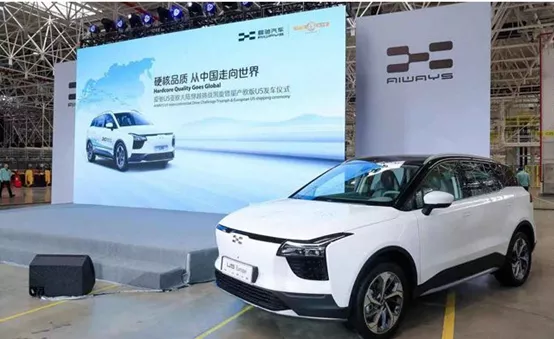
The U5 battery-swapping version launched this time is a new product based on Aiways’ pure electric MAS platform.During the process of switching to electric cars, if a car originally designed for gasoline is converted to electric power, the mechanical structure of the chassis has already been compromised. Adding a swappable battery mechanism will significantly reduce its reliability and durability.
The chassis of the Aiways U5 electric car was designed specifically for electric power, which allows designers and engineers to make targeted adjustments to the battery pack design without compromising the integrity of the chassis. This ensures sufficient space for the swappable battery pack and strengthens the chassis to ensure the battery pack is securely fixed in place.
As a result, the Aiways U5 swappable battery model has improved safety and quality assurance for the battery pack. In addition, Aiways maintains an open approach to technology and has collaborated with BluSmart to develop a high-quality swappable battery service system that matches high market demand and rapid iteration for the export of the Aiways U5 to the European Union. The collaborative effort will undoubtedly help revolutionize the swappable battery model.
For the future, Aiways plans to expand this swappable battery network to overseas markets.
Aiways’ strategy for new energy vehicles goes beyond electric cars with either charging or swappable batteries, and also includes hydrogen fuel cell vehicles. In November 2019, Aiways unveiled another powertrain solution, methanol reformed hydrogen fuel cell power technology, which uses methanol to produce hydrogen in the car, reducing carbon emissions by 40% compared to electric power and 67% compared to gasoline engines across the complete life cycle of hydrogen fuel usage. This technology does not emit harmful gases compared to internal combustion engines and can also control CO2 emissions if a capture treatment device is installed.
Aiways’ methanol reformed hydrogen fuel cell power technology is a more practical and effective solution than traditional hydrogen fuel cell technology because it does not require hydrogen refueling stations. It can be implemented with only minor modifications to existing gas stations at a cost of only RMB 70,000 – 150,000.
In summary, Aiways’ solution for methanol reformed hydrogen fuel cell technology provides a good solution for areas where methanol resources are abundant or easily applied and enables carbon peak and carbon neutral transportation.
The same holds true for swappable battery infrastructure, as carbon peak and carbon neutral transportation remain significant challenges in the field of automobility, particularly for Aiways as a trailblazer in the industry. Commercial vehicles emit several times more CO2 than private vehicles, and reducing emissions from commercial vehicles is a challenge that has to be addressed to achieve carbon peak and carbon neutral transportation.This is also the original intention when various local governments promoted the Blue Sky Action Plan, which explicitly required rental and ride-hailing cars to be electrified.
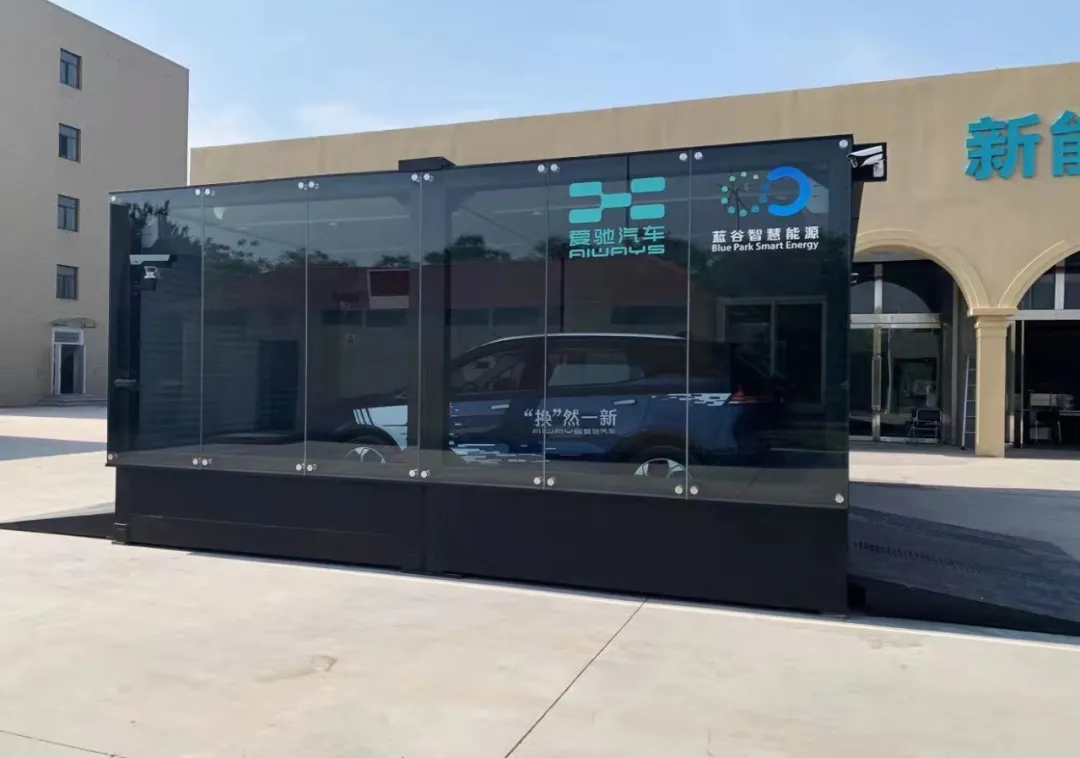
From the perspective of commercial vehicle operation efficiency, battery swapping is much more efficient than charging, comparable to the operation efficiency of fuel vehicles.
Taking Blue Valley Intelligent Energy, a partner of Aiways, as an example, it operates as many as 137 battery swap stations in Beijing, and is expected to reach 220-250 by the end of 2021, which can meet the huge demand for battery swap pure electric taxis in Beijing.
On the basis of corresponding scale battery swap stations, electric vehicles only need 90 seconds to swap batteries. For pure electric taxis that do not support battery swapping, they spend nearly 2 hours on charging per taxi per day on average.
2 hours vs. 90 seconds, it means each pure electric taxi can operate for an additional 2 hours per day.
The benefits of battery swap pure electric vehicles are not only the improvement of operation efficiency, but also the enhancement of battery safety and the improvement of resale value, which are more advantageous than charging electric vehicles.
Therefore, when planning public transportation carbon peak and carbon neutrality implementation plans, various regions will consider the emission reduction effect of battery swap vehicles replacing ride-hailing vehicles.
Battery swapping brings rich commercial space
Although battery swapping is good, the cost is higher than charging vehicles in the early stage.
Construction of battery swap stations, cost of spare power batteries, site rent, personnel costs, etc. are all obstacles on the path to promote battery swap electric vehicles.
Fortunately, the government has attached great importance to the development of battery swap vehicles from the top-level.
After several consecutive policy documents were issued, the development path of the battery swap vehicle market has become clear, and capital has begun to become active.
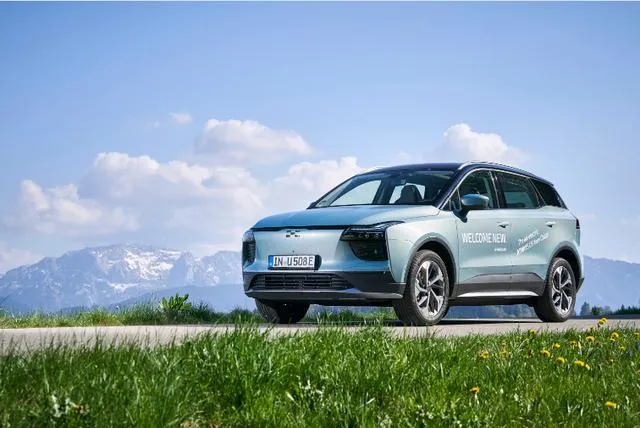
Battery swapping vehicles have high technical barriers and high early-stage investment costs, but through battery swapping operation, on the one hand, operating costs can be reduced and operation efficiency can be improved, and on the other hand, power batteries can participate in battery ladder use. After battery swapping vehicles are phased out in first-tier cities, they can be put into operation in second-tier and third-tier cities. After that, the operator can also make ladder use according to the degree of battery loss, dig deeply into the value of the battery life cycle, and form a new business of battery operation.
Moreover, based on the new energy vehicle credits and carbon dioxide emission reduction achieved by producing and using battery swap electric vehicles, returns may be obtained through credit trading and carbon trading. Especially in Europe, where Aiways exports its vehicles, the carbon trading market and prices are relatively mature. Therefore, the battery swapping model may find a sustainable commercial model.
Therefore, it is not too late to enter the battery swapping market at this time. This imaginative market has just started.
This article is a translation by ChatGPT of a Chinese report from 42HOW. If you have any questions about it, please email bd@42how.com.